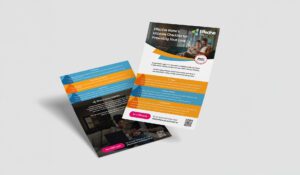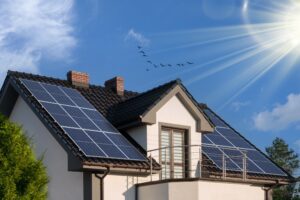There are plenty of reasons to use solar panels at your home. They’re great for the environment, solar power is effectively free, and you won’t have to pay sky high electricity bills anymore.
That doesn’t mean that solar panels are perfect, though, as they come with their own set of problems. Here are 15 of the most common problems with solar panels to help you understand some potential issues.
-
Low-Quality Materials
You probably heard about solar panels and how they contribute to reducing carbon emissions and saving the environment. So you might think that manufacturers will always use premium, high-quality materials to build them.
That’s true — most of the time. Yes, like any other electronic device, some manufacturers can produce low-quality solar panels to save on costs, and it’s these that can be more troublesome.
It won’t be long before the panel’s components start to malfunction and they might even come apart. Delamination is a common phenomenon among cheap solar panels and occurs when the plastic backsheets separate from the glass, allowing external elements to penetrate the inside.
We don’t think water seeping into the interiors of your panel will help boost its performance. So, naturally you want to invest in much better quality solar panels.
-
Faulty Inverter
Most solar panel enthusiasts know that inverters convert electricity from direct current (DC) to alternating current (AC). If you don’t know, an alternating current is what we use to work our appliances, lamps, fans, and televisions.
So, you can imagine how essential these inverters are to a solar set up. There’s more to the boxy devices than that, though.
Besides optimising the performance of solar modules, they can also manage the voltage of the AC to make sure the panel works safely.
Here’s the problem: A faulty inverter doesn’t just deprive you of the luxury of an AC converter, it can also cause potential fire hazards.That’s why we recommend getting a professional to install your inverters. You also want them to inspect your panels regularly to prevent potential malfunctions and replace faulty parts.
-
Weather Damage
As we’ve already established, solar panels aren’t invincible. So it’s no wonder accumulating weather damage is one of the most common issues they face.
Like most electronic devices, they can fall before severe weather conditions, like high winds, hurricanes, lighting, etc. Each extremity causes different types of damage. Let’s see a few examples.
High Wind
High wind can force your panels to fall off of the roof if they aren’t installed properly. They can also cause tree branches to fall on the surface, causing severe cracks and reducing performance.
Snow
Snow can damage solar panels from the inside and outside. You probably know that solar panels are installed at an angle to prevent snow accumulation.
Unfortunately, though, they can’t always shake off heavy snow. As it accumulates, it blocks sunlight, preventing the panels from producing electricity. The heavy weight can also put too much pressure on the panels, causing potential cracks.
Extreme Heat
Generally, solar panels can withstand a great deal of heat. That doesn’t mean it won’t affect their performance, though. The ideal temperature for solar panels is around 25℃ (77℉).
If it goes above that, you’ll likely witness a rapid decline in performance. So, you might want to consider investing in protective covers.
- Create a Tailored Quote Based On Your Circumstances
- Takes Less Than 2 Minutes
- Fixed-Online Quotes

-
Electrical Issues
Don’t forget. Solar panels are part of a complex electrical circuit system. So, it’s susceptible to various electrical issues, especially loose wire connections.
If you don’t address the problem, you could be risking potential power outages and fire hazards. Luckily, fixing loose wiring is simple enough. A professional solar technician should be able to identify and tighten any loose parts.
-
Malfunctioning Battery
Not all solar systems are connected to an electrical grid, meaning they can’t draw as much power. These systems usually depend on batteries to store the electricity the panels produce during daylight hours,
Dealing with these batteries can be a bit tricky. You have to ensure you don’t undercharge or overcharge them, otherwise their lifespan may be limited.
They’re also susceptible to sulphate build-up, which can shorten their running period and prolong their charging time, so it’s always a good idea to frequently check your batteries for any signs of damage.
-
Potential-Induced Degradation
Potential-induced degradation (PID) is when an electric potential is building up on the surface of your solar panels.
For the untrained, it might sound like a good thing, but it’s not. In fact, it can reduce the efficiency of the panel’s performance over time, causing it to lose up to 30% of its power.
-
Dirt Accumulation
Yes, trivial occurrences like dirt, dust, or leaf accumulations can affect the performance of your panel. You see, like snow, when built-up dirt and dust cover the surface, they prevent it from properly absorbing sunlight.
So, your panel won’t function at full capacity or produce electricity to its full potential. A quick clean now and then can make all the difference to performance.
-
Insects
Despite being small, insects can cause a great deal of damage to your panels. They may not appear like it, but solar panels are insect magnets.
Because of the way they’re installed, they can be a safe shelter for insects, providing not only shade but also protection from predators.
Over time, however, these insects can settle down and build a nest underneath the panels. These nests can get caught in the wires, affecting the panel’s performance.
Insects can also build their nests on the surface of your panel, increasing the risks of potential cracks, and their dropping can also reduce the efficiency of the panel’s performance.
-
Micro Cracks
Even if you buy high-quality solar panels, that doesn’t mean every component is made with premium materials. In fact, the solar cells that make up these panels are usually quite delicate and over time, they develop tiny cracks that most people can’t notice.
Eventually, however, these cracks will expand.This will affect the panel’s ability to absorb sunlight, reducing its electricity producing performance..
We recommend contacting a professional the moment you spot any cracks. If you wait too long, they become impossible to repair and it’s likely you’ll have to replace the entire panel.
-
Hot Spots
As the name suggests, hot spots are areas that get too hot in the panel. They can occur for plenty of reasons, like low-quality cells, partial shading, PID, etc.
You might well think that doesn’t sound too bad as electronic devices get hot all the time, but gradual heat increase causes a decrease in efficiency. Not only will your panel produce less energy, but the interiors will also start malfunctioning.
-
Roof Damage
Solar panels might be better for the environment, but they may not be great for your roof. It’s poor installation that can cause some trouble, especially if the roofs’ weight limit is miscalculated and the panels are installed that are too heavy. That increases the risk of your roof collapsing over time.
The installation process also involves drilling holes into the roof. If you don’t do that correctly, you risk having water seep in, damaging your roof and house.
-
Birds
Yes, insects aren’t the only species that pose a threat to your solar panels. Birds might cause even more trouble. Since these panels are usually exposed, they make an easy target for their claws which can scratch and scuff the surface, which doesn’t help their lifespan. Birds can also fly into solar panels, cracking or breaking the surface.
Here’s the bigger issue: if birds settle down or build a nest under your panels, their presence results in damage, especially to wires, and their droppings won’t do much for your solar panels’ performance.
-
Malfunctioning Junction Box
If you take a look at the back of most solar panels, you’ll find a small junction box. It carries all the electric bits and connects different components inside the panel. To put it simply, it helps carry electricity out of your panel.
The problem is that that box isn’t protected from external elements. So if water, dust, debris, or insects penetrate its interiors, the diodes inside can burn, causing hot spots and reduced efficiency.
Luckily, the solution is quite simple. Just invest in an IP67-rated junction box. It’s more expensive, but it’s worth it.
-
Snail Trail
Don’t worry. We don’t mean actual snails. Snail trails refer to thin lines of discoloration on the surface of the panel. We call them that because they resemble the slimy trails that snails leave behind.
These occur due to the long-term usage of your panels. They may not seem much at first glance, but they’re more troublesome than they look.
They can affect your panel’s ability to absorb light, reducing its ability to produce energy. If you don’t call for professional help right away, you’ll notice signs of severe physical damage over time.
-
Regular Maintenance
As you can tell by now, solar panels don’t always have it easy. They’re exposed to extreme weather, debris, animals, etc.
Naturally, they require some cleaning and maintenance to function at full capacity. It’s one of the more troublesome aspects of using them, but it’s one of the most crucial. You want to stay on top of your maintenance game, so you don’t face reduced efficiency issues.
Most solar panel problems can be remedied
Now you know the 15 most common problems with solar panels, you’ll be better prepared for the issues you may face. Yes, your panel will face numerous potential problems, whether internal or external.
Luckily, though, most of these problems can be fixed with regular cleaning and maintenance checkups and the help of professionals to keep your solar panels in tip-top shape and maintain their efficiency levels.
- Create a Tailored Quote Based On Your Circumstances
- Takes Less Than 2 Minutes
- Fixed-Online Quotes




